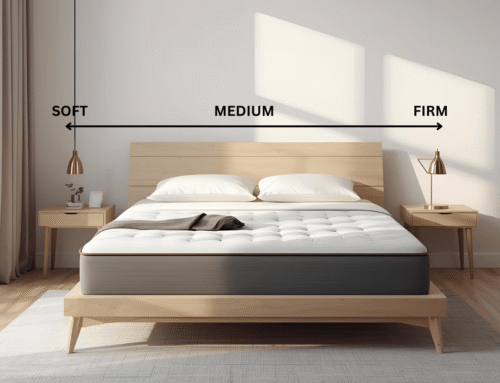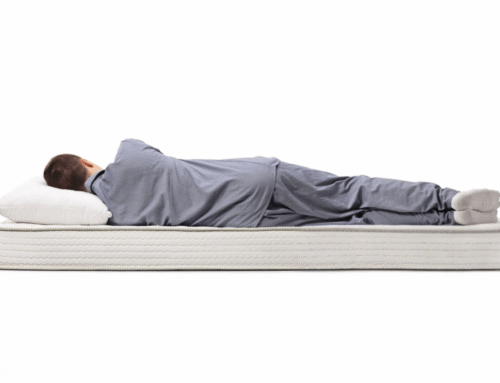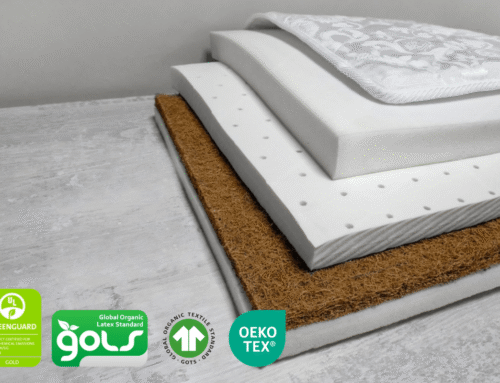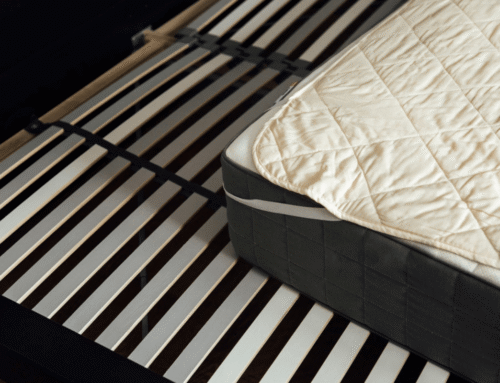Many people feel unsure about what goes into a hybrid bed since these models blend coils with foam or latex layers for a balance of cushioning and support. Some hybrids use memory foam that hugs the body, while others include latex for a more responsive feel, so checking what’s inside helps avoid disappointment.
Some mattresses add cooling materials like gel infusions or breathable covers, which reduce overheating for those who sleep hot at night. Firmness varies widely, so trying a mattress in-store or reviewing return policies online ensures the feel suits personal preferences instead of depending on vague descriptions. Durability relies on the quality of coils and foams since lower-density materials sag faster than expected.
Many overlook edge support or motion isolation, yet these features improve sleep by adding stability and limiting partner disturbances. Paying attention to warranty terms and reading customer reviews reveals how a mattress holds up over time. We’ll walk you through these key points so choosing a hybrid mattress feels more straightforward and confidence comes easier.
Key Takeaways
- A hybrid mattress combines coils and foam to deliver soft pressure relief with steady support, great for side, back, or combo sleepers.
- Coils improve airflow and edge support, while foam layers contour to the body, ideal for hot sleepers and those with restless partners.
- Quality hybrids include at least 2 inches of memory foam or latex for proper comfort and pressure relief.
- Back pain relief depends on both firmness and construction. Zoned coils and medium-firm models help keep the spine properly aligned.
- Before you buy, review trial periods, foam density, coil count, and certifications to avoid sagging, overheating, or subpar materials.
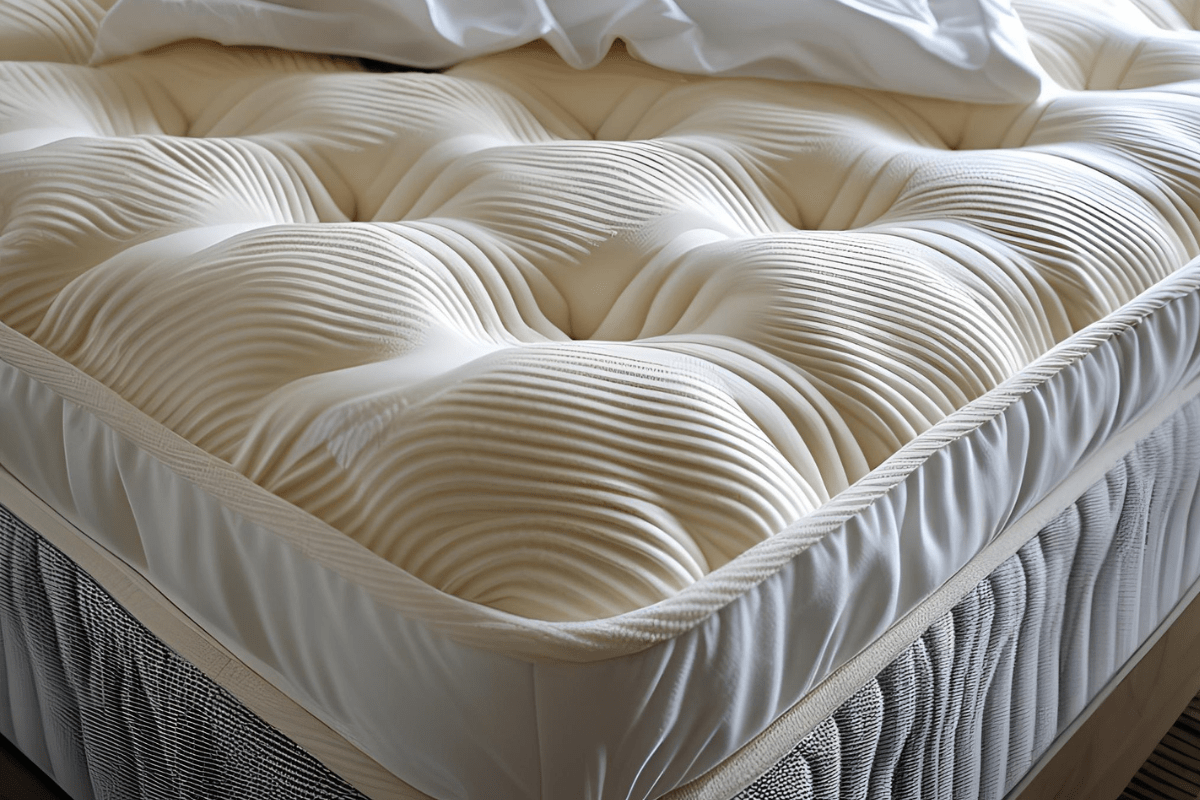
What Is a Hybrid Mattress?
A hybrid mattress blends a coil base with comfort layers such as memory foam, latex, or polyfoam, so sleepers experience sturdy support along with a cushioned surface. This combination eases pressure on the shoulders and hips because the foam contours to the body as coils keep the spine aligned.
Different hybrid designs lean toward either firmer support or plush softness, so paying attention to the top layers’ thickness and materials matters. High-quality models include at least two inches of foam over the coils, which relieves pressure and encourages better airflow to keep the mattress cooler at night. The coil system also improves edge strength, so sleepers use the entire mattress surface without feeling like they might slip off.
Choosing a hybrid suited to individual comfort needs depends on preferred sleep positions, body weight, and desired firmness. Back and stomach sleepers benefit from firmer hybrids for steady lumbar support, while side sleepers appreciate thicker, softer foam that reduces joint stress. Understanding these details makes it easier to choose between a hybrid mattress and a gel memory foam when it comes to support and comfort.
Why Choose A Hybrid Mattress?
A hybrid mattress brings together the cushioned hug of foam and the sturdy support of coils, which creates a balanced sleep surface for side and back sleepers. Many people notice how the coils allow better airflow, helping reduce night sweats, unlike most all-foam beds that trap heat.
Others appreciate how hybrids ease the stuck feeling some memory foam beds cause, giving a bit of bounce so changing positions doesn’t feel like a chore. There’s a nice mix of contouring comfort and pushback support that can relieve pressure points without the overly firm sensation of a traditional innerspring.
Another highlight is the variety available, since hybrids come in options from plush to firm, so different sleeping styles or body types find a better match. Instead of sacrificing comfort for support or vice versa, many enjoy how hybrids let them have both in one mattress, which helps them rest easier night after night, and this leads many to weigh which is better between innerspring or hybrid mattress and whether hybrid or memory foam mattress works best for back pain.
Key Materials Inside Hybrid Mattresses
Here’s what people should know about the layers in a hybrid mattress:
- Comfort layers: Most hybrids include memory foam, latex, or polyfoam. Memory foam brings a plush and contouring sensation that cradles pressure points. Latex feel springy while adding resilience and lasting strength. Polyfoam can give moderate cushioning for those on a tighter budget.
- Support core: These mattresses typically use pocketed coils, which move individually so a partner’s tossing and turning won’t ripple across the bed. These coils also support spinal alignment since they adjust to body shape instead of pushing back evenly like old innerspring units.
- Base layer: A slim foam section beneath the coil system helps anchor the mattress so it stays balanced and supportive over time. Without this foundation, coils alone might shift and create uneven spots that cause discomfort sooner.
Each of these layers plays a role in shaping comfort, stability, and durability for different sleep styles and needs.
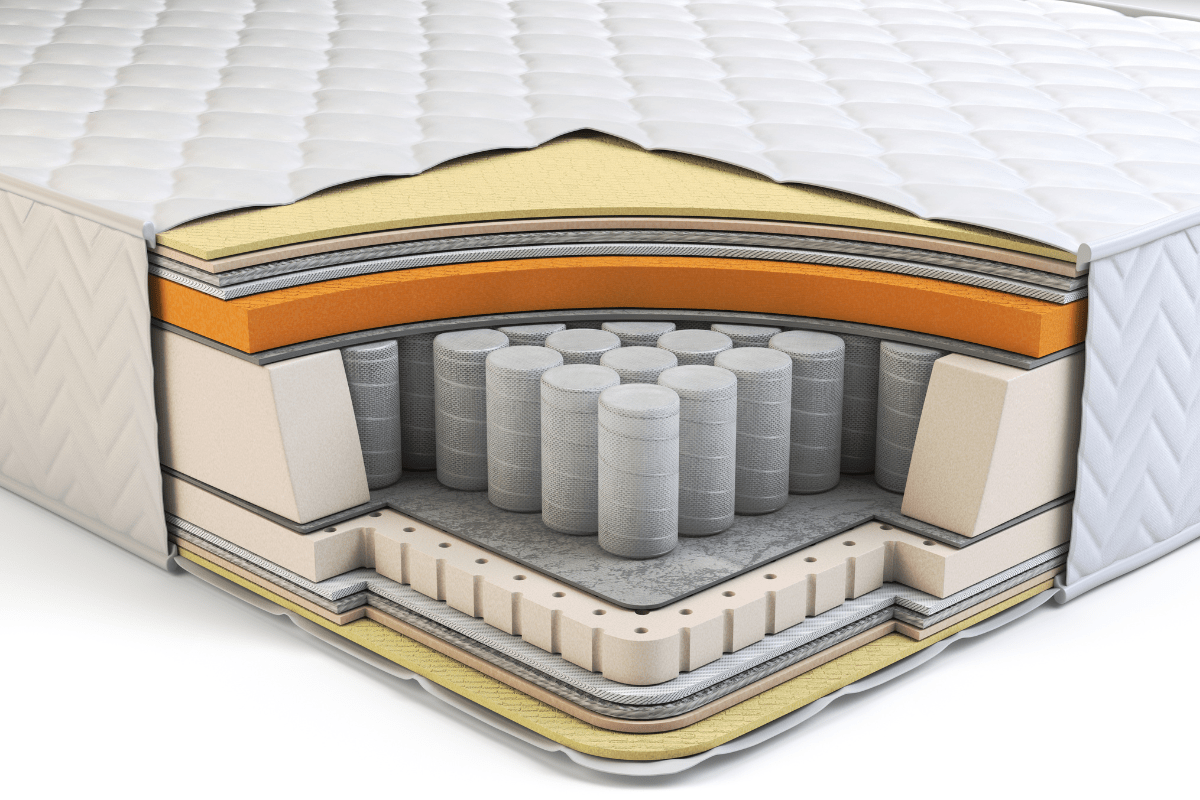
Hybrid Mattress Vs. Other Types
Hybrid mattresses combine coils with foam layers for a balance between support and comfort. Compared to memory foam, hybrids provide more airflow, which helps keep the sleeper cooler through the night, while still allowing some body contouring. Memory foam is softer and more enveloping, yet hybrids avoid that overly “sinking” sensation, and many people consider which mattress lasts longer between memory foam and hybrid.
In comparison to traditional innerspring mattresses, hybrids usually feel less firm and provide improved pressure relief because of the added foam layers. Innersprings have a classic bounce and solid support, but sometimes lack the cushioning that hybrids include. This combination suits people who want some softness without losing the support coils provide.
Latex mattresses naturally stay cool and deliver a responsive and bouncy feel. Hybrids that include latex layers can deliver a similar experience but usually come at a lower cost. The final decision depends on personal preference for firmness and budget, since hybrids blend qualities from several mattress types into one option.
Is A Hybrid Mattress Good For Back Pain?
A hybrid mattress can provide good support for back pain when chosen carefully. Medium-firm options with zoned support or reinforced coils under the hips help maintain proper spinal alignment and reduce pressure points. This balance brings relief for those struggling with discomfort during sleep.
Back and stomach sleepers benefit from firmer hybrid mattresses, which have extra support needed to keep the spine straight. On the other hand, side sleepers generally find comfort in hybrids that combine a softer top layer with sturdy support underneath that cushion sensitive areas like shoulders and hips without sacrificing stability.
Choosing a hybrid mattress means finding the right combination of firmness and contouring. The coil system delivers solid support and improved airflow, while the foam or latex layers provide comfort where it’s needed most. This blend creates a sleeping surface that eases pain and promotes better rest.
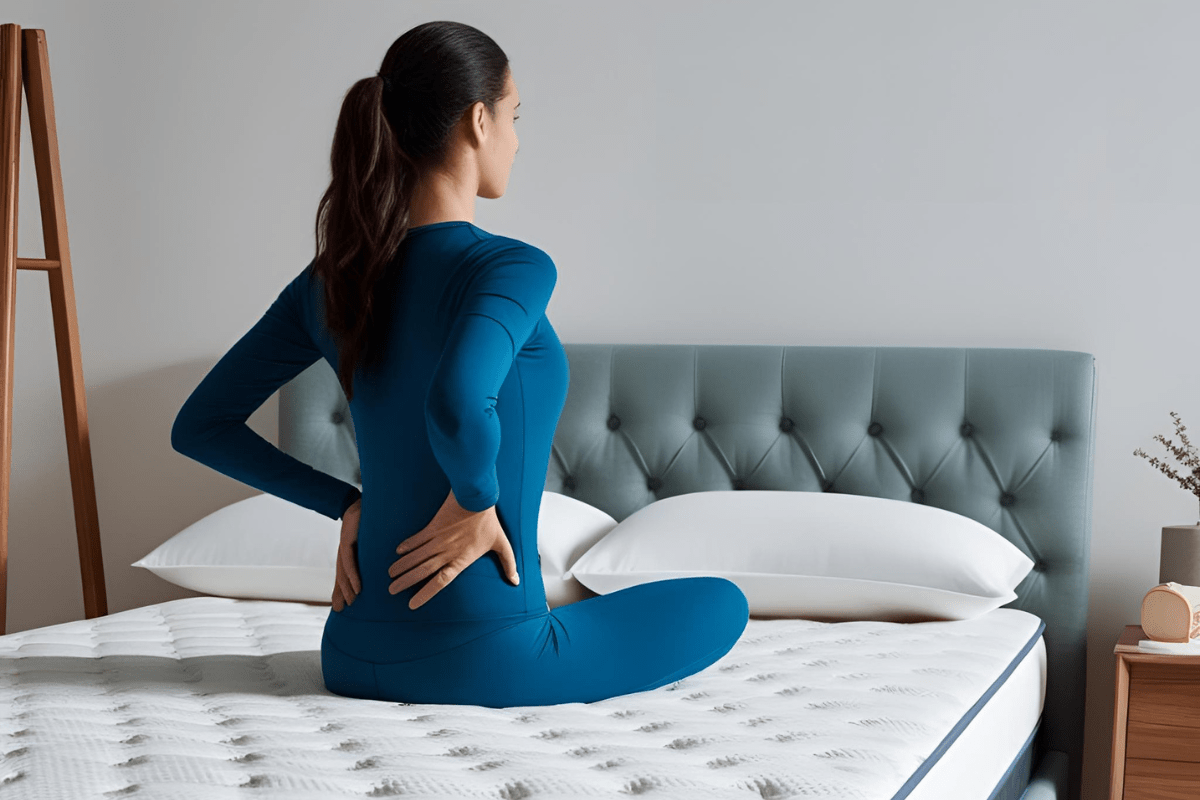
What To Look For In A Hybrid Mattress
A hybrid mattress is made with foam layers and innerspring coils for both comfort and support. Quality foam should have a density of around 3 to 5 pounds per cubic foot, which provides enough durability and pressure relief. Memory foam often works best because it contours to the body, but lower-density foams wear out quickly.
Coil construction is important in support and motion isolation. Pocketed coils outperform open coils since each coil moves independently, reducing disturbance from movement. For a queen size, having 800 or more coils usually means better support and durability over time.
Edge support affects how stable a mattress feels, especially when sitting or getting up from the bed. Reinforced edges prevent sagging and extend mattress life. Cooling features such as gel-infused foam or breathable covers add comfort for those who sleep hot. Always request clear material details; if a seller cannot provide them, it is wise to consider other options.
Trial Periods And Warranties Matter
Trial periods and warranties often get overlooked by shoppers, yet they are essential in mattress satisfaction. Hybrid mattresses usually offer sleep trials lasting between 90 and 120 nights, providing enough time for the body to adapt to the new support. Alongside this, a solid 10-year warranty helps protect buyers from manufacturing defects and premature wear.
Understanding the return process is just as important as the trial itself. Some companies impose restocking fees or complicated return steps that can add unexpected costs or hassle. Careful attention to the terms ensures a smoother experience and avoids surprises down the line.
Sleep trials give consumers the chance to test comfort over weeks, which matters because initial impressions can change. Warranties reinforce confidence in quality for peace of mind over time. Both elements work together to support a purchase that lasts and feels right.
Pros:
- Balanced surface with plush comfort above and sturdy support below
- Cooler sleep experience since coils improve airflow compared to solid foam beds
- Strong edges provide stability along the sides, which helps with sitting or getting up
- Transfers less movement across the mattress, helping partners rest better
Cons:
- Tends to weigh more, so shifting or rotating can require extra effort
- Costs more than basic spring mattresses, which may not fit every budget
- Some hybrids include low-quality foam layers, which can lead to early sagging
Checking the density of the foam and thickness of the coils matters because these details affect long-term support and how the mattress feels over time.
Many people share that hybrids provide a cozy yet supportive sleep, though others point out the added expense and weight can be disadvantages. Researching specific models helps avoid issues with cheap materials and ensures years of comfortable rest.
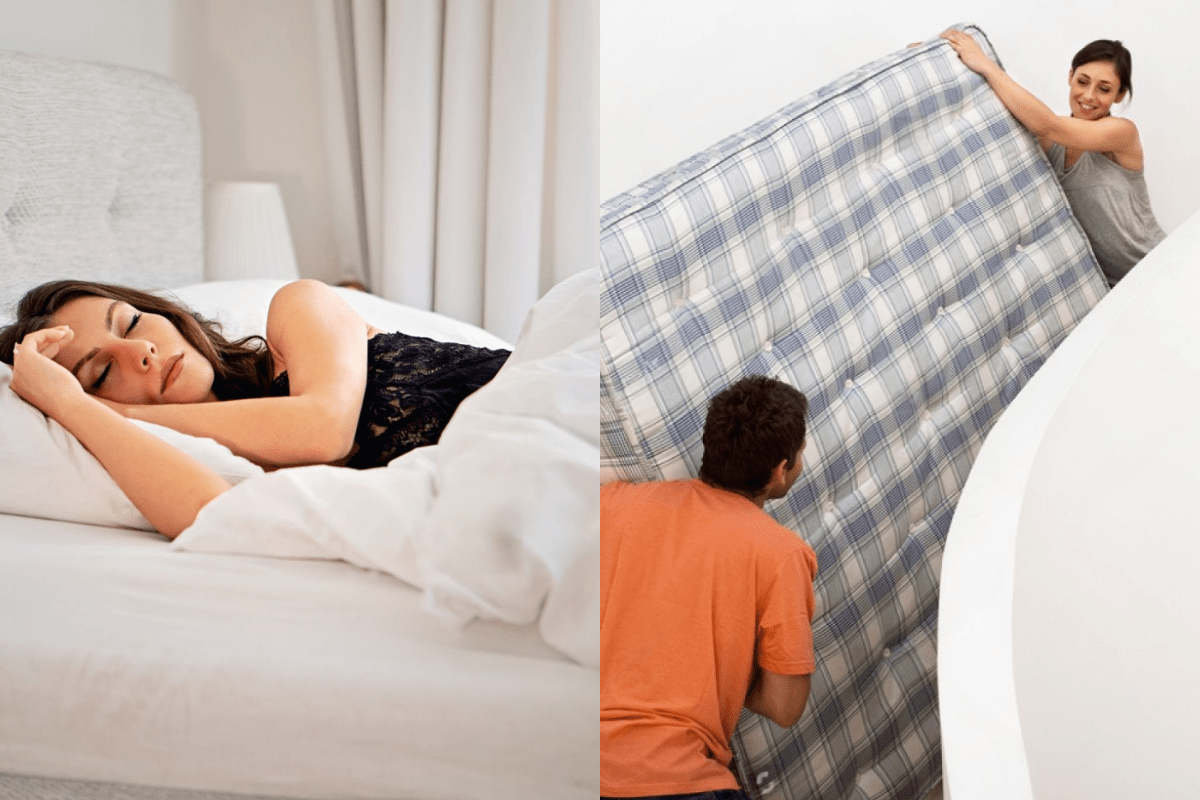
Tips Before You Buy A Hybrid Mattress
Hybrid mattresses combine coils and foam to balance support and comfort, but the feel varies widely. Testing mattresses in person helps gauge firmness and pressure relief more accurately than online descriptions. Comparing several brands reveals differences in materials and construction that affect durability and overall sleep quality.
Lower-priced hybrid mattresses use cheaper foams that break down quickly, which leads to sagging or loss of support. It is wise to prioritize models with certified materials like CertiPUR-US or GREENGUARD Gold, as these ensure safer and higher-quality components.
Return policies and warranty terms serve as important factors to review before purchasing since a generous trial period and strong warranty provide protection against defects or discomfort, and taking time to research and compare these details results in more restful nights and long-term satisfaction with the mattress.
Buyers should also think about details such as the need for a box spring with a hybrid mattress, its lifespan, the time required for full expansion, potential issues when you sleep on it too soon, the maximum duration it can stay in the box, proper cleaning methods, the recommended frequency for rotating the mattress, its break-in period, how to compress and move it, and the overall weight of a hybrid mattress since these practical considerations influence convenience, care, and the lifespan of the mattress.
Final Thoughts
Hybrid mattresses combine foam layers with coil support for a balanced sleep experience. The quality of foam affects comfort, while the coil system provides necessary support and airflow. Together, these features help reduce overheating and promote better spinal alignment over time.
Personal sleep preferences are also important in finding the right hybrid mattress. Side sleepers prefer softer foams that cushion pressure points, while back or stomach sleepers usually benefit from firmer support. Paying attention to how these components work together can prevent discomfort and improve overall rest.
Taking time to research and understand mattress construction helps avoid buyer’s remorse. Asking detailed questions about materials and design reveals which models last longer and remain comfortable. A thoughtful approach increases the chance of finding a mattress that feels right for many nights ahead.


